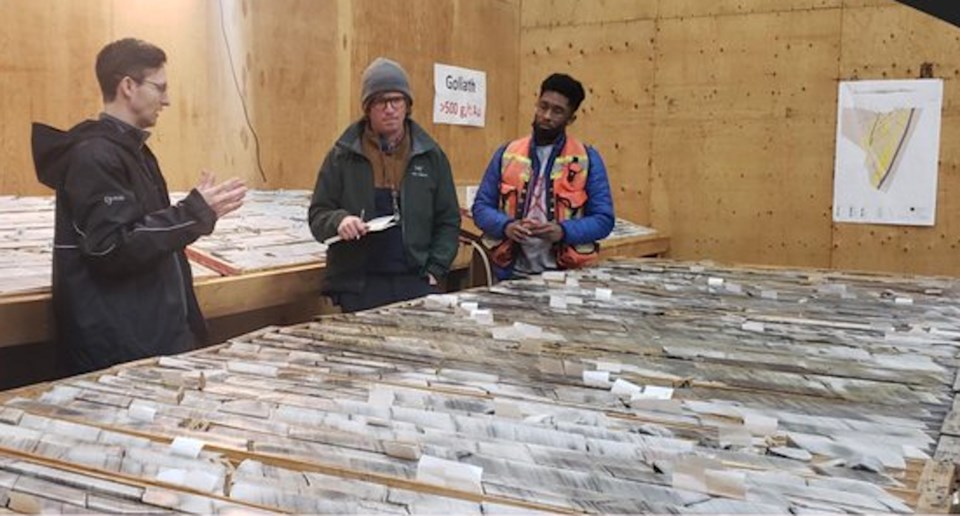Goliath Gold is living up to its name as Treasury Metals posted a new resource estimate for the district-scale mine complex, just east of Dryden in northwestern Ontario.
After digesting last year’s drilling results, the Toronto mine developer boasts an almost 3-million-ounce measured, indicated and inferred gold resource at its three deposits of the Goliath Gold Complex. The 330-square-kilometre land package consists of the Goliath, Goldlund and Miller deposits.
Through exploration, Treasury has been making gold discoveries along a 65-kilometre strike length in building a multi-million-ounce resource.
The new combined measured and indicated resources for all three deposits is up by nine per cent to 2,138,600 ounces. The inferred resource is 782,800 ounces, up 48 per cent.
The difference between measured, indicated and inferred resources is the degree of confidence in the amount of gold in the ground with measured being the highest and inferred being the lowest. Usually more drilling on a deposit or a prospective mineral property, with more tightly spaced holes, will increase the level of confidence in a gold property.
Sign up for the Sudbury Mining Solutions weekly newsletter here.
This new resource estimate is based a total of 3,185 drill holes measuring 540,329 metres for all three deposits, taking in 176 more recently drilled holes, over more than 41,000 metres, since the last resource estimate came out in March 2021.
All this new drilling information will be folded into an upcoming prefeasibility study due out sometime during the second half of this year.
Last year, a preliminary economic assessment (PEA) - a mineral and technical study of what a mine could look like - projected a 13-year mine life for Goliath. A prefeasibility study will give a better idea of what a mine will look like.
The company has not yet made a construction decision to build a mine.
The Goliath deposit, located 20 kilometres east of Dryden and just off the Trans-Canada Highway, is the more advanced of the three deposits.
Goldlund and Miller were acquired in 2020 from First Mining Gold. These projects were located next to Goliath. Treasury then launched into a PEA to get a better sense of the geological picture and figure out how to combine all these projects into one large, district-scale-sized, mining and processing operation.
Treasury recently closed a US$20-million royalty deal with Sprott Resource Streaming and Royalty Corp to finance the economic studies, consultation and other costs to carry the project through to the start of construction.
In a statement released on April 14, Treasury Metals president-CEO Jeremy Wyeth was pleased that the gold complex has reached more than 2.1 million ounces in the measured and indicated categories and more than 780,000 ounces of inferred gold.
“In June 2021, we committed to growing the mineral resource with the addition and conversion of tonnes and ounces through the 2021 drill program and geological modelling, which the team delivered on.”
Wyeth expressed his eagerness to see the results the prefeasibility (PFS) study for Goliath due out later this year.
“The combination of our engineering efforts and the Project’s access to world-class infrastructure will help us to deliver mine plan growth from PEA (preliminary economic assessment) to PFS. We also intend to continue exploration activities on the Goliath Gold Complex and our 330-square-kilometre land package through 2022.”




